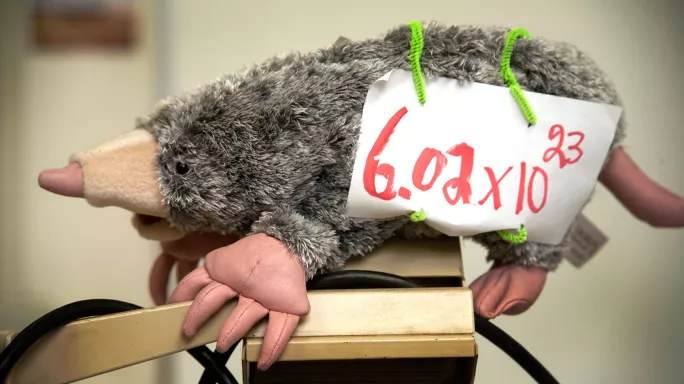- Home
- 3 essential steps for building a maths curriculum
3 essential steps for building a maths curriculum

Maths is a hierarchical subject. Foundational knowledge is built upon, this is then built upon, and so on, until we have the complete body of maths.
In theory, this should make building a maths curriculum quite straightforward: start with the most foundational knowledge and then add whatever builds on it. Keep going until you have 13 years’ worth.
Except, if it were really that simple, then the maths curriculum would have been decided for everyone years ago, probably when the national curriculum was first introduced in 1988, and would never have changed.
Instead, we have had multiple revisions at either primary or secondary (or both), along with different companies providing (both free and for charge) ready-made curricula for maths teaching.
Quick read: GCSE mocks: have you made the most of your data?
Quick listen: How to implement variation theory in maths
Want more articles like this? Join our Tes Teaching and Learning Facebook group
One of the biggest issues when designing a coherent curriculum is the interconnectedness of mathematical ideas.
Take multiplication as an example. In the hierarchy, multiplication builds on addition; the first step for most pupils into the concept of multiplication is repeated addition.
However, repeated addition is not a complete illustration of the idea of multiplication. To fully understand multiplication, one has to connect to the concept of area, to prime numbers, to the compounding of units and a host of other ideas.
We also cannot develop the concept of addition fully before we move into multiplication - pupils don’t tend to learn what it means to add negatives, fractions, surds, algebraic terms and so on, before learning to multiply positive integers.
So how can we make this a navigable journey of understanding for our pupils?
Having been through a key stage 4 curriculum design, and now being part way through a full redesign starting at Year 7, I have some tips that I can share if you are working on your own curriculum.
1. Plan both forwards and backwards
We have introduced our new curriculum first to Year 7, and plan to roll it out as our current Year 7 move through the school. But that isn’t how it was planned.
It was planned by looking at what was needed for when pupils were looking to move on to A level (our school is an 11-16 secondary) and then worked backwards.
At the same time, we looked at which ideas from primary school we wanted to consolidate and deepen because we knew they were important for later concepts.
So we start with arithmetic, but in particular we make sure that the necessary ways of thinking about addition, subtraction, multiplication and division are secure so that they can be built upon later.

We revisit what it means to measure, but make the links to division so that when it comes to compound measures, this follows naturally.
Working from both ends allows us to capture the hierarchy, but also to make sure we end up where we need to end up and thus plan approximate timings on the way.
I say approximate timing because it is, of course, different for each pupil and class, so timing must be flexible enough to allow for the pace that is necessary.
2. Go as deep as each idea naturally allows
When we look at addition in the integer arithmetic unit, we look at how far we can take the idea of addition while still talking about integers.
So, yes, we will focus on pupils being fluent with column addition, but we will also look at calculations like 4 × 9 + 7 × 9 = 11 × 9, and how this is different to 4 × 9 + 7 × 11.
This builds on and reinforces a fundamental way of thinking about multiplication, which is linked to the idea of unitising, but also is essential for depth of understanding necessary for when it comes to appreciating that:

But that something needs to happen before you work out:

Indeed, this is where I think many of the maths teachers who argue for teaching “procedural fluency” before “conceptual understanding” are mistaken. Teachers that make that argument typically say that the procedure is much simpler than the understanding, so it is easier to teach that first.
What they fail to recognise is that the only reason the procedure is easier than the understanding is because they didn’t lay the groundwork for that understanding to develop earlier in their curriculum. By taking ideas to a much greater depth, the connections between ideas become more apparent.
That is when understanding, for example, fraction addition (and other topics like it), stops being “something new and confusing” and starts being a relatively straightforward extension of what is already a well-understood idea. If I (as a pupil) understand enough about fractions because my curriculum allowed the depth necessary, and I understand enough about addition, then fraction addition simply becomes the coming together of these two ideas.
Importantly, it is something I can make sense of and understand because it forms a natural connection between these ideas, rather than being an isolated thing that I have to remember until I am shown the connection (or manage to make it for myself).
“Shown” in the previous sentence could mean “explicitly taught” or could mean “offered an activity that allows me to become aware of” - this will depend on the teacher, the pupil, the class and a whole host of other variables.
3. Provide as much support to your teachers as you can
If your department is anything like mine, you will have a host of different teachers, with different styles and different experiences. You might have non-specialists. You might be reliant on long-term supply teachers.
Whatever your circumstances, your curriculum should be much more than just a list of topics or objectives.
I know of some schools where there is literally just a topic/objective list and an order of teaching, and staff are left to plan and teach to that list. The huge, huge problem with this is that you completely relinquish control over the implemented and enacted/achieved curriculum (Bauersfeld, 1979).
Bauersfeld talked of curriculum at three levels.
- First, the intended curriculum - what it is we want pupils to learn. This could be a national curriculum or a curriculum document that a school writes.
- Secondly, we have the implemented curriculum - that which is actually taught.
- Finally, the enacted curriculum - that which is learnt.
If all we provide is a list of objectives or topics, we leave the implemented and enacted curriculum solely in the hand of individuals. While some may think that this is the optimum state of affairs, there are problems with this approach. Individual staff may or may not have the expertise to be effective in creating these curricula, and they may not have the experience to know the most effective ways to either implement or enact the curriculum.
Even if some of the individual staff do have the expertise, pupils are likely to work with many staff over their school lives. If all of these staff are teaching in different ways, using different interpretations or ways of making sense of different mathematical ideas, this is not going to add up to a coherent curriculum for pupils.
Our curriculum involves lots of information about key representations, common misconceptions, the required depth in terms of examples and non-examples, and other notes to allow staff as much support in enacting the curriculum as possible.
In fact, we have even shared out the lesson planning of our units so that we use each other’s plans, meaning at least the implemented curriculum is as coherent as possible for all pupils, no matter which particular member of staff is implementing it.
Of course, as teachers we do not have full control over the enacted curriculum so pupils will all follow slightly different curricula (requiring the flexibility I alluded to earlier), but at least with this support, myself and my team can reduce this variability as far as is practical.
Peter Mattock is head of maths at an 11-16 school in Leicestershire and author of Visible Maths
Register with Tes and you can read two free articles every month plus you'll have access to our range of award-winning newsletters.
Keep reading with our special offer!
You’ve reached your limit of free articles this month.
- Unlimited access to all Tes magazine content
- Save your favourite articles and gift them to your colleagues
- Exclusive subscriber-only stories
- Over 200,000 archived articles
- Unlimited access to all Tes magazine content
- Save your favourite articles and gift them to your colleagues
- Exclusive subscriber-only stories
- Over 200,000 archived articles



